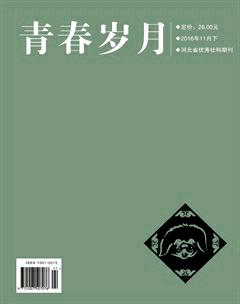Necessities of Applying Total Physical Response to Children English Teaching
Quan+Qiaoli
Abstract:With the rapid globalization, children learning English has become a trend of the times, which promotes the fast development of our countrys English training markets. The paper briefly states the advantages of total physical response and the necessities of applying total physical response to children English teaching.
Key words:total physical response(TPR); education status; necessity
1. Introduction
Total Physical Response (TPR), refers to a language teaching method built around the coordination of speech and action, which is widely used in children English class. Dr. Asher points out that the way that children learn language by doing actions is called Total Physical Response. It shows an interesting way of teaching and learning English to us.
2. Necessities of Applying TPR
2.1 Psychological characteristics and age characteristics of students
Childrens nature is active and lively. They are good at imitating and being quick in the uptake and love speaking, singing, playing and performing. Therefore, teachers must renew teaching notions constantly, change the teaching form and means, and vary their teaching methods. As long as you can do these, the learning interest of students can be stimulated.
Children have weaker self-control ability. Therefore, it is impossible for them to sit for 40 minutes to learn English. But if we use TPR method to let them participate in various activities in class, we will catch their attention effectively and make them concentrate on studying.
It is hard to use total English to organize the class, and TPR method is close to body language. Students at lower age is being at the stage of concrete image thinking. TPR method provides a chance imitating the action of teacher to students, which helps students learn English easily.
2.2 Motivation of learning interest
According to Standard of English Curriculum, students in grade 1 and 2 are easy to be cultivated in learning interests. These students at this stage arent suitable for accepting English language knowledge. So teachers task should focus on mobilizing students learning interest, make them acquire some perception, and cultivate their good studying habits by the activities of listening, speaking, reading, singing, and playing etc.
The teacher should play an exemplary role in applying TPR approach. James Asher points out that the teacher is the director of stage and students are actors. Teachers are the key of teaching content and method. James also emphasizes that teachers should give students the best chance of feeling language. Teachers use their own rich body language to combine sound with meaning for deepening the students memory. TPR method integrates vision, sense of hearing and organs, makes learners do actions of speaking, acting, and thinking at the same time, which proves moving memory is better than static memory. It is proved that teaching a song with actions is much better than just teaching a single song in teaching practice. Students learning in a state of interest can benefit greatly. TPR approach aims at that s children learn in listening, speaking, acting and playing.
2.3 The promotion of emotional communication between teachers
In class, if the teacher teaches with a smile, it will shorten the distance between teachers and students. The teacher creates a better and lightly environment, which is very helpful for students to improve learning efficiency. For example, when teaching LETS GO Unit1 Lets Learn More “Open the door.”, I walk to the door, open the door and say the sentence. After repeating several times, I ask students: “Do you understand?”. Some students nod their head and say “Yes”. Then I order students to do so. Practice two or three times later, I ask a student to order and another student to do. In this way, I teach others sentences, such as “Close the door. Take out your book. Put away your book, etc”. In the process of teaching, they feel very excited. Both teaching knowledge and developing emotions make students like to learn, and keep their interest in learning.
2.4 The enhancement of memory and the improvement of class teaching efficiency
James Asher thinks that the greater the memory connection tracking is, the stronger the memory is. Teachers use their own rich body language to combine sound with meaning for deepening the students memory. TPR method integrates vision, sense of hearing and organs, makes learners do actions of speaking, acting, and thinking at the sane time, which proves moving memory is better than static memory. By acting, teachers can not only enhance students memory, but also improve their teaching efficiency.
3. Conclusion
It is proved that applying TPR to childrens English teaching is a great success. TPR can create a real and pleasant environment for students, and supply them opportunities to communicate and perceptually experience English. Generally speaking, students understanding ability is higher than expressing ability.
【Bibliography】
[1] Asher, J. “Childrens First Language as a Model of Second Language Learning”[J]. Modern Language Journal, 1972(3):133-139.
[2] Krashen, S. D. Language Acquisition and Language Education[M]. London: Prentice Hall International, 1989.
【作者简介】
权巧丽(1978—),女,硕士研究生学历,陕西省渭南市渭南师范学院讲师,主要研究方向:二语习得。

